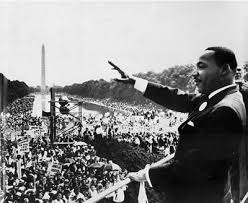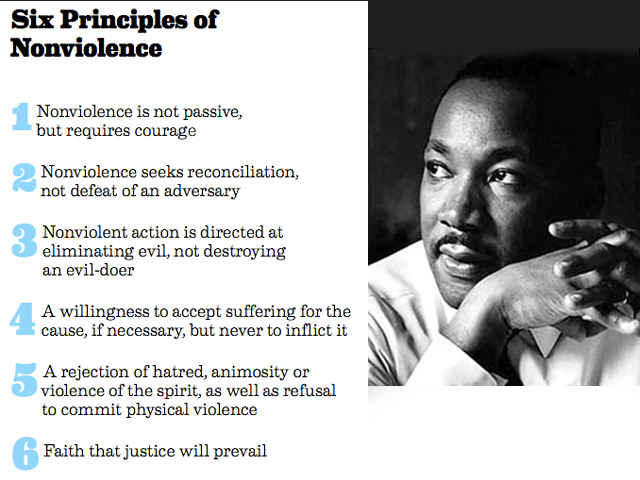Distortions about the Civil Rights Movement
I think that one of the sad legacies of the 1960's civil rights movement was that people seem to think that demonstrations like those in the 1960's almost magically led to changes, or justice, and nothing could be further from the truth. Direct action, as in demonstrations, was largely that last action in a campaign. And when most people demonstrated in the 1960's they were invariably clear about their demands - they largely knew precisely what they wanted changed in the society.
Tiananmen Square Massacre: Chinese and Filipino Activists
The tragic consequences of not having clarity was demonstrated in 1989 in China. My time in the Philippines in 1989 was not long after some 4,000 activists had been killed and 20,000 wounded in what became known as the Tiananmen Square Massacre in Beijing, China.
While in Manila in 1989, I talked with Filipino activists who had been in constant communication with many of the Chinese students who were demonstrating in
Tiananmen Square and demanding democracy in China. What concerned my Filipino friends was the lack of unity, organizational infrastructure, and clarity in the demands of the students and workers to the Chinese government, which, they said, likely helped contribute to the violent response from the Chinese government. The Chinese government, in fact, had asked the students what they wanted and the students couldn't offer a definitive answer.
Perhaps nothing would have altered the violent Chinese government reaction and the Filipinos were by no means apologists for the Chinese violent behavior, but rather they stressed the need for clarity and unity in any demands for social change when challenging a powerful state.
Martin Luther King, Jr. and
Non-Violent Social Change
Many in the United States want us to think about Martin Luther King's 'dreams'. Now, I'm sure King had his 'dreams' but his primary mission, and those of civil rights activists everywhere, was about 'action' coupled with concrete and definitive change. Everyone concerned about injustice should take another look at King's nonviolent methods.
Nonviolent social change requires long, hard and sustained work; research; development of solutions; and, importantly, on-going commitment. It demands far more than bringing folks together to march, demonstrate and wave banners.
Mass mobilization or direct action, in fact, is only one part of the nonviolent methods for social change. There are other misconceptions I would like to mention, but first here is a description of the steps King and others used in their social change work.

Steps of Nonviolent Social Change
Based on the philosophy of Mahatma Gandhi, the Kingian method for nonviolent social change is a systematic one. Here is a brief summary:
(1) once the problem is identified it is essential to research the issue (i.e. define the problem, who are the key players, who or what is being affected) - the research and analysis should be above reproach as disputed or incorrect facts and figures can completely undermine the efforts for the evolving campaign;
(2) based on the research, state clearly what needs to change to solve the problem and identify the strategy for solving the problem;
(3) recruit others to join the struggle, share your findings and strategies, get their input if necessary, but essentially seek a commitment from them (i.e. this is the problem, this is what we intend to do, are you with us?)
(4) teach them in nonviolent tactics (i.e. being non-confrontational during direct action);
(5) attempt to resolve the problem through negotiations (i.e. negotiations with whoever controls the policies needing to be changed);
(6) if that doesn't work, apply pressure through direct action techniques, which at times need to be sustained for a lengthy period (i.e. boycotts, mass demonstrations);
(7) negotiate again, and, if necessary, engage in direct action again - often more research is required or more clarity on the solutions needs to be developed;
(8) finally, if the problem is solved, seek reconciliation.
The final goal is redemption and reconciliation
The issue that also gets lost is that King sought "reconciliation" with his adversaries and an improvement of life for everyone. This is the end goal and if victory is all that's wanted then that's not Kingian nonviolence. Reconciliation is also probably the most difficult aspect of the Kingian philosophy for activists to embrace. In his book "
Stride Toward Freedom" King said that the nonviolent methods are
"not an end in themselves; they are merely a means to awaken a sense of moral shame in the opponent. The end is redemption and reconciliation. The aftermath of nonviolence is the beloved community, while the aftermath of violence is tragic bitterness."
How to define adversaries
There is almost always a misunderstanding of how to define the adversaries in nonviolent social change. Dr. King said it is not a "battle" against "individuals" who commit evil acts but against the evil itself. Regarding the Montgomery struggles, he said,
"The tension is between justice and injustice...and not white persons who may be unjust."
King said further that
"the nonviolent resister would contend that in the struggle for human dignity, the oppressed people of the world must not succumb to the temptation of becoming bitter or engaging in hate campaigns. To retaliate in-kind would do nothing but intensify the existence of hate in the universe. Along the way of life, someone must have sense enough and morality enough to cut off the chain of hate."
Concrete demands for change
Another misconception is that complaints can be made without concrete demands for change. Those who seek change should always develop the solutions because you don't want to leave that in the hands of your so-called 'adversary' - otherwise you've wasted your time.
King also called for a fair hearing from the adversaries and to listen to them, as there might be some wisdom to gain from that experience. He also said, however, if you don't like what politicians or others do, you certainly don't want them to be the chief architects in resolving problems. So don't just engage in a 'feel good' march in front of the White House, Congress, State House or Wall Street. for that matter. and assume that you have completed your mission, made your statement. If you haven't developed your solutions to the problems you're addressing, you've only done a quarter or less of what is necessary.
'Nonviolence' and 'Pacifism' are not the same
It is often thought that nonviolence and pacifism are the same. Not so! It is probably true that most advocates of nonviolence are also pacifists. Nevertheless, nonviolence is a 'method for change'. Pacifism is 'being against war'. Within this misconception is the assumption that nonviolence is cowardly, a 'turn the other cheek' method, which is not true.
As a method for change, nonviolence is confrontational. King said, "
it must be emphasized that nonviolent resistance is not a method for cowards; it does resist. If one uses this method because he is afraid or merely because he lacks instruments of violence, he is not truly nonviolent. This is why Gandhi often said that if cowardice is the only alternative to violence, it is better to fight."
Nonviolent campaigns should have boycotts, voter education & registration
King said that every nonviolent campaign should be anchored in a boycott and, importantly, voter education and voter registration. While everyone could do more on this, voter education and registration are often included in various movements.
Rarely these days, however, do US activists also choose to challenge the bulwark and muscle of corporate America, even in spite of the unfettered capitalist abuse in which we live. King wisely recognized that going against corporate America was one of the most vital ways to change behavior. Referring to the Birmingham movement, King said,
"it was not the marching alone that brought about integration of public facilities in 1963. The downtown business establishments suffered for weeks under our unbelievably effective boycott."
Summary and 'Six Principles of Non-Violence'
King once said that the
"Arc of the moral universe is long and it bends toward justice." The demonstrators today are definitely bending the arc but as King would say
"Where do we go from here?"
What do we want? If there was ever a time to shift that paradigm it is now!

HEATHER GRAY produces "Just Peace" on WRFG-Atlanta 89.3 FM covering local, regional, national and international news In 1985-86 she directed the nonviolent program at the Martin Luther King, Jr. Center for Nonviolent Social Change in Atlanta. She lives in Atlanta, Georgia and can be reached at [email protected]
